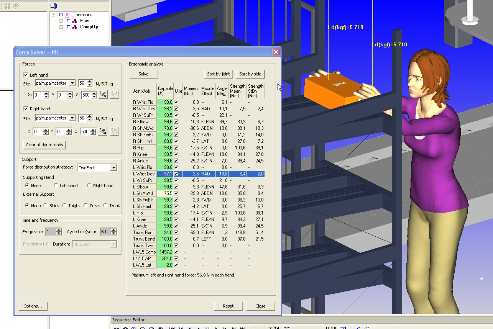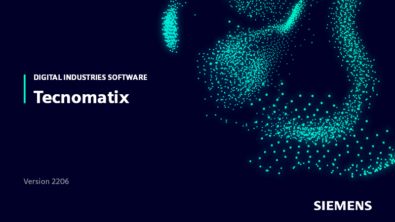Can’t See, Can’t Reach, and Can’t Fit

Use human simulation software at every stage
Author: Ulrich Raschke, Director Human Simulation Products, Siemens Digital Industries Software.
Most things produced today will be assembled, used or serviced by people, so it’s valuable to focus on the human right from the start of the design process. A challenge is that people are not uniform – we’re all of different sizes, shapes and capabilities. Our variability needs to be accommodated in product and workplace designs. Digital human simulation provides the technology to help with this – virtual people can be created to represent people from around the globe. By considering the human at each stage of the design process, new workplaces are easier to work in, reducing overexertion injuries caused by awkward postures, and product designs are more likely to accommodate target users, leading to improved user satisfaction.
Video: The value of digital human model
Digital human models help you to identify common human factors problems such as extreme postures, excessive strength needs and difficult accessibility during design. Often, performance capability, like strength, is impacted by the posture. The Jack human simulation technology can predict a broad range of performance issues, and let the designer know if a task will be possible and within accepted guidelines.
The challenges that customers face
Human size and capability variability needs to be considered throughout the engineering lifecycle. For example in vehicle design, this might include finding the range of seat adjustability needed for safe operation by everyone in the target user population. In manufacturing, strength capability is a typical assessment need. Inserting an engine hose onto a fitting may require an extreme wrist posture due to reaching around surrounding components – will the associate have the strength to consistently put the hose on in this posture? Human simulation can also serve as a communication and validation tool. By reviewing a planned (simulated) task sequence with an experienced operator, missing process steps can be identified or time saving alternative approaches found.
Human Simulation Trends

Static -> Simulation – Traditional ergonomic evaluations often looked at analysis of the most strenuous posture situation. Today, ability to simulate the motions of an entire task sequence allows both process and ergonomics to be evaluated in concert, saving time and resulting in improved solutions.
Ergonomics -> Industrial Engineering – Simulation of task sequences allows more than ergonomics to be evaluated. As mentioned earlier, industrial engineers can use the same simulations to optimize the planned process steps.
Regionalization – Design of customized products for specific user populations requires availability of accurate anthropometric shape and size models from around the globe. New anthropometric population models are continuously being added to the Jack solution.
Product design – New car powertrains and novel autonomous vehicles open up radically new ways of seating passengers in the vehicle. Traditional methods may no longer provide the answers during design of these non-conventional configurations. The flexibility of the human simulation environment lends itself well for exploration.
Safety and standards compliance – Ability to consider corporate and governmental ergonomic guidelines throughout the development process avoids time-consuming rework issues late in the process. It can also help document compliance with regulations. The recent interest in collaborative robots introduces new challenges where human simulation can be of help. Combined with the robotic simulation in the Process Simulate environment, human safety risks described in ISO/TS-15066 collaborative robot safety document can be evaluated and considered.
Input/Display devices – New consumer-priced position trackers and head mounted displays are being introduced to the market at a rapid pace. Ability to take advantage of these devices provides additional ways to get value from the human simulation tools, including ability to become immersed and explore their virtual designs 1st hand.
Motion tracking technology has made great leaps in the last decade. Systems are much more affordable, more accurate, and easier to use. Motion tracking with Tecnomatix Jack can be used to evaluate the ergonomics of complex motions such as vehicle ingress/egress, to quickly evaluate the ergonomics of alternative postural strategies (example kneel vs sit), or to author simulation movements. This video illustrates the smooth data modern gyro suit systems are capable of tracking.
Siemens Human Simulation Product Portfolio
Digitalization is allowing product and workplace designs to be realized much faster and better than ever before. As the pace of this development accelerates, ergonomists and industrial engineers are leveraging Siemens’ Jack for NX and Process Simulate Human software tools to comprehensively evaluate usability, physical ergonomics, maintainability and workcell layout efficiency before any physical incarnation is created. Regardless if your focus is on product design, where you may use the Jack for NX solution, or manufacturing, where the Process Simulate Human environment may be preferred, the integrated human simulation capability enables you to take a human centered design approach. Below, the key features of the products are highlighted.
Jack for NX Software
Jack for NX software delivers human factors assessment within design environment.
The software offers the following benefits:
-
- Support human centered design– focus on product usability from start
-
- Find critical design issues immediately
-
- Fully integrated with NX assemblies and modeling environments
-
- Vehicle occupant Packaging tools
The Jack for NX solution includes these features:

Jack for NX
- Accurate human figures to represent workers from around the world
- Accurate kinematics for reachability and clearance assessments
- Seated and standing reach zone assessments
- Empirically based whole body posture prediction or traditional inverse kinematics for figure manipulation
- Eye views to help evaluate placement of critical controls or to avoid blind spots
- Occupant posture prediction and Comfort Assessment
The Jack for NX solution has been dramatically enhanced in recent releases.

Jack for NX : A summary of the latest features includes:
-
- Introduction of deformable skin figures including base and casual clothing variants (v11.0.1)
-
- Update the Human dialog to include additional anthropometric databases (introduced with 10.0.3, enhanced with v11.0.2)
-
- Eye view windows (v11.0.1)
-
- Dynamic real-time Jack mover (v11.0.1)
-
- Connection with Vehicle Design Automation Base data (v11.0.2)
-
- New posture library (v11.0.2)
-
- Disembodied Hands for clearance assessments (v12.0)
-
- Seated Encumbered Soldier posture prediction (v12.0)
Human Simulation for manufacturing & assembly
 Process Simulate Human software allows comprehensive ergonomic analysis of products and processes. The tools can be used to achieve the following:
Process Simulate Human software allows comprehensive ergonomic analysis of products and processes. The tools can be used to achieve the following:
-
- Increase productivity
-
- Improve quality
-
- Reduce work-related Injuries

Our solution: Siemens Process Simulate Human
-
- Manufacturing Focus
-
- High end human factors analysis
-
- Integrated to PS Framework
-
- Teamcenter Manufacturing Connectivity
Process Simulate is a comprehensive simulation tool for manual tasks. The software offers:
-
- Accurate human figures to represent workers from around the world
-
- Accurate kinematics for reachability and clearance assessments
-
- Reach zone assessments
-
- Empirically based whole body posture prediction or traditional inverse kinematics for figure manipulation
-
- Eye views to help evaluate placement of critical controls or to avoid blind operations
-
- Rapid and details simulation creation
-
- Comprehensive human performance analysis tools
-
- Integrated motion capture support for ease of use and in-depth movement analysis
For more information go to our Process Simulate Human web page.
Additionally, Siemens offers a standalone human simulation tool called Jack. This package is available free, for 30-day trial offer. Register now.
If you have a question, please ask in the Comment section below. If you enjoyed this blog, please give Ulrich a kudos!


